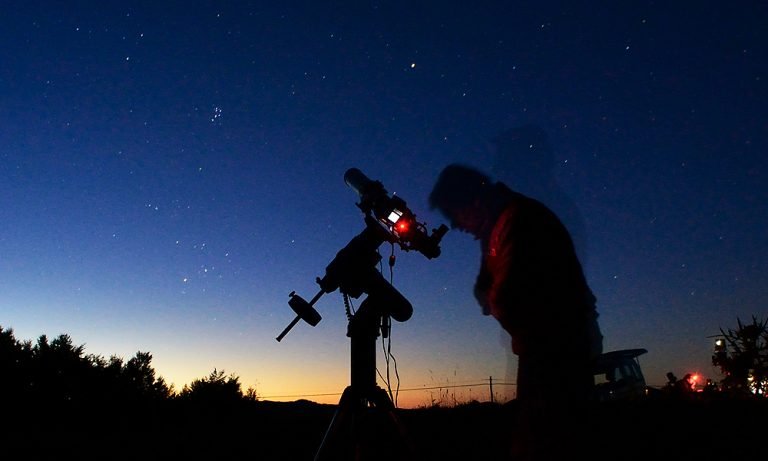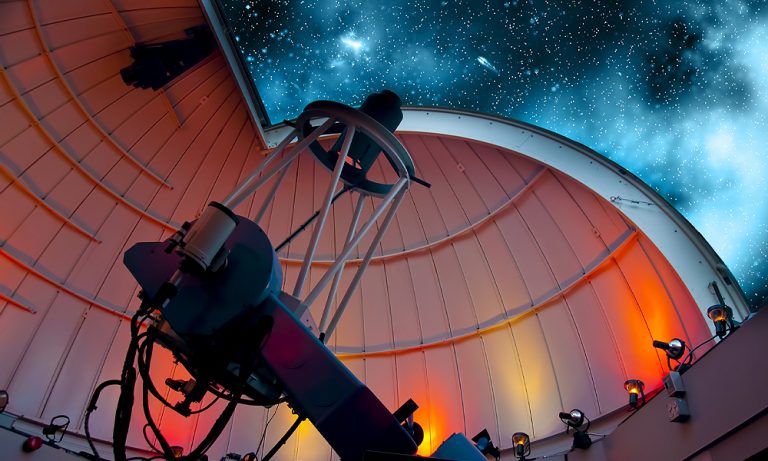5 Best Schmidt Cassegrain Telescopes Worth the Money (2024)
So, you want to get into astrophotography or upgrade to your first big boy scope? Schmidt-Cassegrain telescopes are the perfect choice for beginners and experienced astronomers.
The best Schmidt-Cassegrain telescopes offer exceptional clarity, color, and crisps views. Here are our favorites.
We Recommend
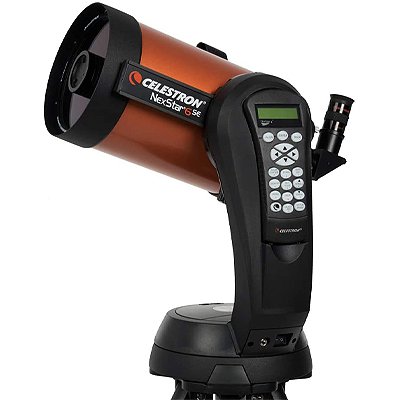
Best price/value ratio
Celestron NexStar 6SE
Telescope.com Price
Optics Planet Price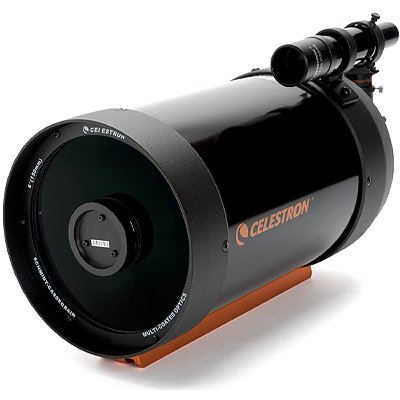
Best budget option
Celestron C6-A-XLT
Optics Planet Price
Amazon Price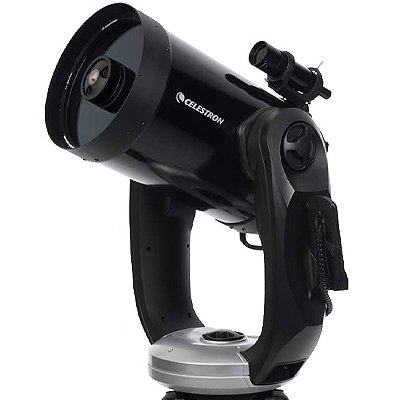
Best that money can get
Celestron CPC 1100
Telescope.com Price
Optics Planet Price
Schmidt Cassegrain
1. Celestron 6″ Schmidt Cassegrain Optical Tube
This is the cheapest of the 5 telescopes that we reviewed.
Even so, like most Schmidt Cassegrain scopes, it still does come at quite a hefty price.
The telescope features a 6″ Schmidt Cassegrain Optical Tube Assembly and an Aluminum Optical Tube.
It has StarBright XLT coatings, which are the premium choice in this industry.

This innovative coating is made up of three different layers that greatly increase contrast and light transmission.
We were able to view details on the moon in great detail, really exciting the kids! The telescope has a 1500mm focal length and a 25mm eyepiece with 60x magnification.
This is a great telescope for a beginner who wants to start with a professional model and not waste time on ‘cheapies.’
Optics Planet Price
Amazon Price
What we liked
- Well priced for a beginner
- Light enough for portability
- Premium StarBright XLT coatings
- More compact than the 8 inch models
- Great clarity and light transmission
- Has a dovetail mount for attaching to a tripod
- Easy to focus
What we didn’t like
- May not suit a professional
- Does not come with a mount
- Lens cover does not have rubber protection
Aperture: 150mm (6 inch)
Magnification: 60x
Lens diameter: 150mm (6 inch)
Field of view: 0.83°
Weatherproof: No
Weight: 11.85 pounds
2. Celestron NexStar 6 SE Computerized Telescope
At only a slightly higher price than the Celestron 6″ Schmidt Cassegrain Optical Tube, we found that this scope has an incredible range of features.
It is ideal for both beginners and experienced stargazers. It is fully computerized and you can control it remotely via a PC.
The scope has a 120mm lens, a focal length of 1500mm, and a magnification of 60x.
We were able to find and view objects in minutes without any specific knowledge of the skies.

The scope has a fully automated Go-To mount. The database of more than 40000 objects gave us access to planets, stars, galaxies, star clusters, solar system objects, and nebulae.
The telescope then tracked the one we wanted automatically. As a family, we took it on an outing and tried some astroimaging!
Telescope.com Price
Optics Planet Price
What we liked
- Great price for all the features you get
- Fully automated GoTo mount
- Automatically locates and tracks objects
- SkyAlign technology for easy alignment
- Light enough to transport
- Database of over 40000 celestial objects
- 2-Year Warranty and Tech Support
What we didn’t like
- May be complex for people with limited computer knowledge
- Initial physical assembly can be tricky
- Remote sometimes does not work well in cold weather
Aperture: 150mm (6 inch)
Magnification: 60x
Lens diameter: 150mm (6 inch)
Field of view: 0.83°
Weatherproof: No
Weight: 21 pounds
3. Celestron NexStar 8 SE Computerized Telescope
The NexStar 8 SE telescope has a 200mm (8 inch) lens, and we certainly noticed the difference when compared to the 6 inch models.
We observed amazing views of the moon, planets, and deep sky objects like the Whirlpool Galaxy.
The scope has a fully automated GoTo mount with a database of over 40000 celestial.
Set up was fairly easy and once it locks onto an object, it automatically tracks it for you.
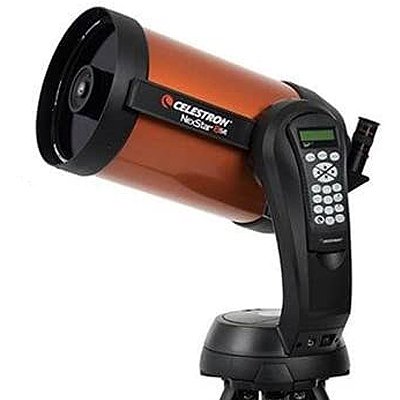
The telescope comes with a range of accessories. It has a 25mm E-Lux lens with 81x magnification.
Also included in the package is a Deluxe Accessory Kit in its own case. The kit contains 5 Plossl Eyepieces, a Barlow Lens, Moon Filter, and 6 Wratten Filters.
Telescope.com Price
Optics Planet Price
What we liked
- Exceptional views with a 200mm lens
- Ideal for beginners and experienced astronomers
- Fully automated GoTo mount
- Supplied with Deluxe Accessories Kit
- Automatically locates and tracks objects
- SkyAlign Technology for easy alignment
- Database of over 40000 celestial objects
What we didn’t like
- Heavy to transport easily
- May be complex for people with limited computer knowledge
- Physical assembly takes time
Aperture: 200mm (8 inch)
Magnification: 81x
Lens diameter: 200mm (8 inch)
Field of view: 0.63°
Weatherproof: No
Weight: 55.4 pounds
4. Celestron NexStar Evolution 8 Schmidt Cassegrain Telescope
The NexStar 8 telescope also has a 200mm lens and offers spectacular views of the moon, planets, and deep sky objects.
Weighing only 13 pounds, it is the perfect telescope to take along on a weekend away. It has a handy
Built-in 10-Hour Battery, so we didn’t need to worry about power at any time.
Views of the moon, planets, and deep sky objects were crisp and clear.
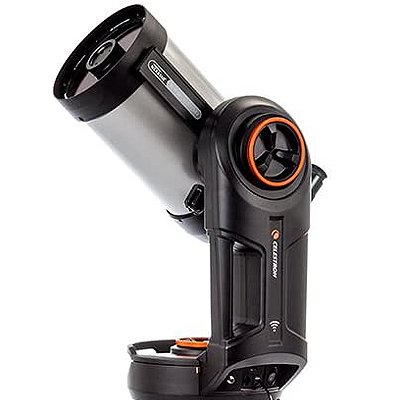
The GoTo mount on this scope has high-performance brass worm gears and motors and tracks objects smoothly as they drift across the night sky.
We also tried some astroimaging with great results. At a slightly higher price, this scope is still exceptional value for money and is ideal for beginners and more experienced stargazers.
Telescope.com Price
Optics Planet Price
What we liked
- Well priced for exceptional views
- Celestron SkyPortal app for iOS and Android
- Easy to use GoTo mount
- Built-in 10 hour Lithium Iron Phosphate Battery
- Lightweight for portability
- Two accessory trays
- USB charge port for mobile phone
What we didn’t like
- Higher price
- Need to buy a cable to plug into PC for software updates
Aperture: 200mm (8 inch)
Magnification: 51x
Lens diameter: 200mm (8 inch)
Field of view: 0.98°
Weatherproof: No
Weight: 13 pounds
5. Celestron CPC 1100 StarBright XLT GPS 2800mm Telescope
The Celestron CPC StarBright features a large 280mm (11 inch) lens, a 2800mm focal length, and 70x magnification.
It is definitely more suited for professional astronomers.
The scope comes with a fully computerized Altazimuth mount and internal GPS.
The GPS makes locating objects easy as it automatically calculates the date, time, longitude, and latitude of where you are.

The database of over 40000 celestial objects tracks any object you desire. Although it is quite heavy, the innovative ergonomic design makes it easy to carry.
My better half managed to do alone without asking for help! We viewed amazing detail on the surface of Jupiter. We also looked at the rings of Saturn and even managed to see Neptune and Pluto.
Telescope.com Price
Optics Planet Price
What we liked
- Large 280mm (11 inch) lens
- Ergonomic design
- Exceptional clarity for professional stargazers
- Computerized dual fork arm Altazimuth mount
- Internal GPS tracks your position
- Database of over 40000 celestial objects
- Hand control holder to view information hands free
What we didn’t like
- High price for beginners
- With the mount, it is heavy to transport
- Some users experienced issues with the GPS
Aperture: 280mm (11 inch)
Magnification: 70x
Lens diameter: 280mm (11 inch)
Field of view: 0.71°
Weatherproof: No
Weight: 83 pounds
Also read:
- 5 Best Solar Telescopes in 2020 [to Observe The Sun]
- 5 Best Telescopes for Viewing Planets in 2020 [Saturn, Mars, Jupiter, etc.]
Schmidt Cassegrain vs. Maksutov Cassegrain telescope?
Schmidt Cassegrain
Schmidt Cassegrains are high-level all-purpose telescopes, ideal for viewing the moon, planets, and deep-sky objects. They are also ideal for astrophotography, using everyday DSLR cameras. Most come with computerized GoTo mounts and motorized object tracking. On the con side, expect to pay more than you would for a Dobsonian-type telescope.
Maksutov Cassegrain
Maksutov-Cassegrain is a great telescope with a shorter tube. They are more suited for objects that require high magnification such as planets, the Moon, double stars, nebulae, and global clusters. They are compact, rugged, and easy to transport. In general, models have a higher magnification than other types of telescopes. Many models are specifically made for use in harsh environments, industrial sites, and military operations.
Commonalities
Both types are built with a catadioptric design that combines a mirror at the back and a lens at the front. This design causes the light path to ‘fold,’ allowing the tube to be shorter. This design also corrects a common problem known as the coma. Coma means that images not in the center of the lens tend to look distorted or wedge-shaped.
Differences
The main difference lies in the design of the mirrors. Schmidt scopes have a thin complex-shaped corrector lens. Maksutov scopes have a thick spherical corrector lens. The secondary mirror in a Schmidt is a mirror, while in the Maksutov, it is not a mirror; it is an aluminized small spot. Schmidt’s usually have bigger apertures than the Maksutovs.
The good and bad of SCT (Schmidt Cassegrain)
Like most high-end electronic devices, telescopes come with pros and cons. When considering buying a Schmidt Cassegrain, the first issue is the price. You will expect to pay more than other brands. But, this will certainly be a telescope that will last a lifetime. The cost is higher due to the correcting lens, motorized tracking, and the innovative GoTo functionality of the mount.
Schmidt telescopes offer exceptional clarity, color, and crisps views. Most come with computerized GoTo mounts that track objects as they move across the sky. Many have built-in GPS technology. This allows the scope to plot longitude and latitude, time, and date without you having to enter the data manually.
When it comes to lenses, you have a choice of smaller models with a 150mm (6 inch) lens. Most offer lenses of 200mm (8 inches). These scopes have a design that allows the light to ‘fold.’ This means that the tubes are shorter and more compact.
Computerized telescopes come with database software of celestial objects, often as many as 40000. By simply focusing on a few key objects, the telescope will find what you want and provide all the info you need. What a great way to easily learn about the night skies! View the surface of the moon, planets, stars, galaxies, star clusters, solar system objects, and nebulae.
If you want to try your hand at astrophotography, you can connect a simple DSLR camera or webcam to the scope.
Although the scopes themselves are compact, the mounts are usually quite heavy. This may be an issue if you plan on traveling with your scope.
What can you observe with a Schmidt Cassegrain?
When it comes to stargazing, the size and strength of your telescope will make a difference. Schmidt Cassegrains are at the upper end of the scale, so you will get amazing views with all the models.
There are 2 main issues you may want to consider, and it is related to price. Scopes in the lower price range have an aperture of 150mm (6 inches). Those at the higher end have an aperture of 200mm (8inches) or more. The larger the aperture, the more light the scope will collect. This allows clearer viewing of deep-sky objects and those that are further away.
Magnification also plays a part. Most Schmidt scopes offer a magnification of between 50x to 80x. The larger the magnification, the more you will see. But, keep in mind that very high magnifications can also cause blurring of objects.
- 150mm (6 inch) Aperture. Use this scope to view craters on the moon. Planetary details like textures, color, and surrounding clouds are apparent. You will see details of nebulae and star clusters.
- 200mm (8 inch) Aperture. More details become apparent. See more detail of the rings of Saturn, the separation of double stars, and precise details of deep-sky objects.
- 280mm (11 inch) Aperture. Now you are able to view sharper and clearer images. Even with light pollution in the atmosphere, you will see faint nebulae that are not visible with smaller scopes.
How to choose the best Schmidt Cassegrain telescope?
Aperture
Schmidt Cassegrain telescopes offer apertures of 150mm, 200mm, 280mm, and larger. All give stunning, clear views with great color and detail. Your choice depends on your budget.
Field of view
This is the circle of sky visible through the eyepiece. The higher the magnification, the smaller the field of view becomes. Schmidt Cassegrain scopes offer a field of view of between 0.70 and 1.00 degrees, ideal for the planet and deep-sky viewing.
Magnification
Telescopes with magnifications of 50x to 80x are ideal for everyday viewing. You can alter the magnification by attaching different lenses. Some scopes come with a kit of lenses of different magnifications. Remember that very high magnifications can distort your images.
Focal length
All-round telescopes have focal lengths of around 1000mm to 1500mm. The shorter the length, the more suited it is to a wide field view. To view objects that are further away, you need a longer focal length.
Mount
Most Schmidt Cassegrain telescopes come with GoTo mounts that offer computerized tracking. If your model does not have a mount, buy one that is lightweight but sturdy. You want to be able to transport it easily. But, you don’t want your scope toppling over while viewing.
Weight
If you have a permanent place for your telescope, weight is not an issue. For portability, the lighter the scope is, the easier it is to take along with you.
Size
Schmidt Cassegrain telescopes have a distinct compact size. This allows you to travel with your scope and not lose out on exceptional quality.

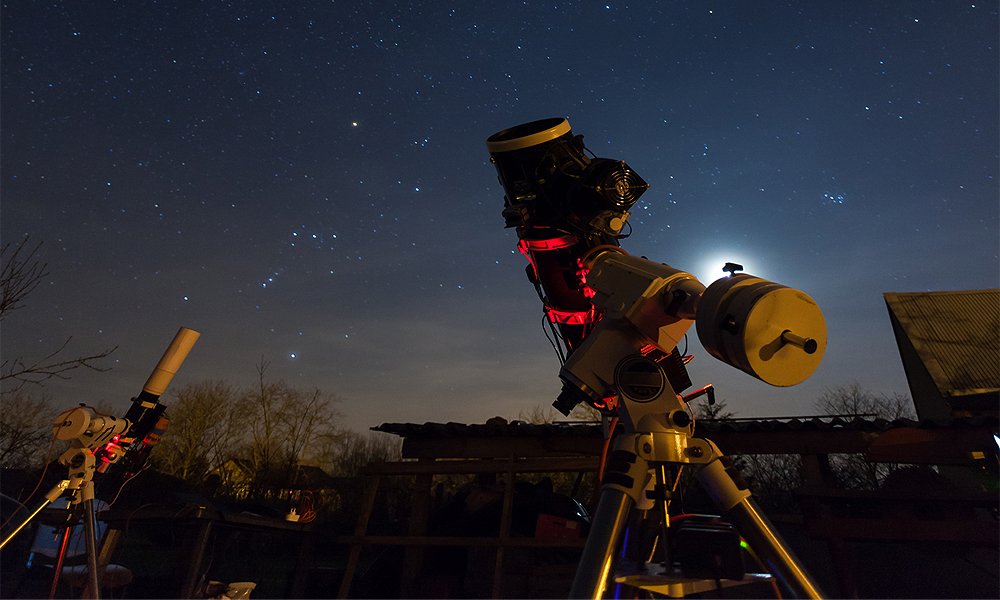
![12 Best Telescopes for Viewing Planets and Galaxies [2024]](https://www.planetguide.net/wp-content/uploads/2019/12/Depositphotos_144986289_l-2015-768x512.jpg)
![12 Best Refractor Telescopes Actually Worth the Money [2024]](https://www.planetguide.net/wp-content/uploads/2019/12/refreactor-telescope-768x461.jpg)
